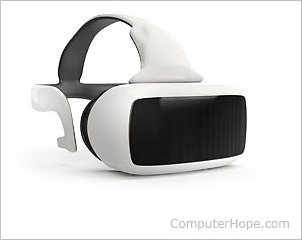Device
A device may refer to any of the following:

1. In general, a device is an object invented to serve some purpose. You are likely familiar with many electronic devices, such as laptops, tablets, and smartphones.
With computers, devices can be internal or external. Internal devices include the CPU (central processing unit), motherboard, and RAM (random-access memory) inside your computer. Most external hardware is also called a peripheral, a device that helps enhance a computer's functionality (e.g., adding a printer).
See our peripheral definition for a full list of peripheral devices, examples, and further information on this term.
See our full list of computer-related terms containing device using our word and letter search.

2. A device is a non-tangible or non-physical object, like a procedure, technique, or plan. For example, a mnemonic device helps you remember a shopping list or your friend's phone number. Acronyms work similarly with memorization. Many recall PEMDAS or "Please Excuse My Dear Aunt Sally" from their schooling. Each letter also stood for "parentheses, exponents, multiplication, division, addition, and subtraction," an easy way to remember the order of operations with mathematical operations.
3. With computers, there are also virtual devices, which are used in resource management. Essentially, they act as placeholders for a real device to carry out a task. An example is software that mimics a fax machine. As software, it performs the same function, even though there is no physical device present.
Accessory, Boot device, BYOD, Computer acronyms, Device Manager, Gadget, Hardware terms, Mnemonic, Playback device, Processing device, Virtual device
